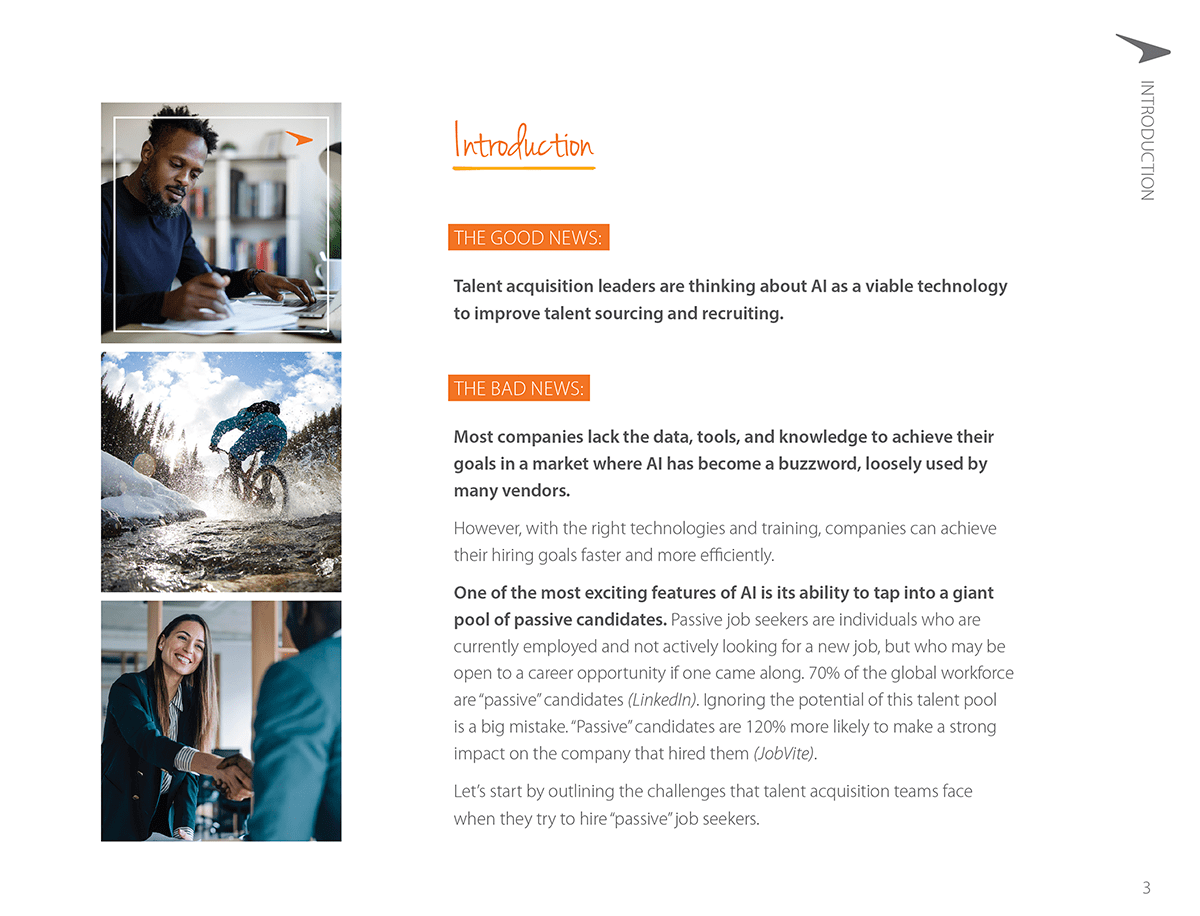
AI can change the way you source, engage, and retain employees.
Looking for ways to beat out your competitors in this tight labor market? Recruiting AI can be the competitive edge you need to improve efficiencies and find skilled talent.
Here's how:
- AI taps into additional data sources to identify talent
- AI predicts missing skills and diversity categories, so candidates aren’t overlooked
- Chatbots increase candidate engagement







